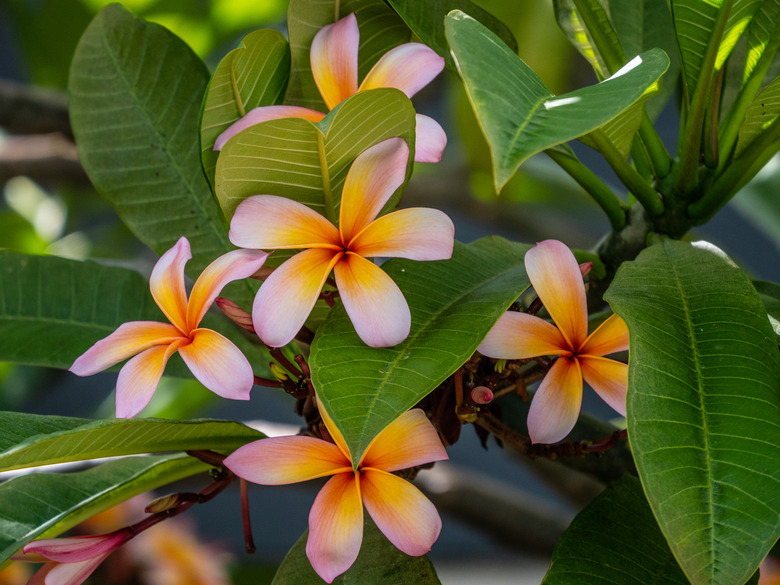How To Grow Hawaiian Plumeria In Florida
Also known by the common names frangipani and nosegay, plumerias are small, flowering, deciduous trees in the dogbane family that are native to the Caribbean and Central and South America. They are grown in many tropical regions of the world, including Hawaii, where the fragrant flowers are used to make leis.
Plumeria plants are hardy in U.S. Department of Agriculture zones 10 and 11 and can be successfully grown in South Florida.
Varieties of Plumeria
There are several species of plumeria trees, though these plants have several features in common, including intensely fragrant flowers with five petals.
Let's look at some common types of plumeria that can be grown in South Florida.
Plumeria Alba
The West Indian jasmine or white frangipani (Plumeria alba, zones 10 to 12) is native to Puerto Rico and other islands in the Caribbean. It has heights between 15 and 25 feet. The flowers of this species are white with yellow centers.
Plumeria Rubra
The species sometimes referred to as the red nosegay tree (Plumeria rubra, zones 10 to 12) has pinkish red flowers. It is native to Mexico, as well as Central America and Venezuela. This tree also has mature heights between 15 and 25 feet.
Plumeria Obtusa
Another species of plumeria is the pagoda tree or Singapore graveyard flower (Plumeria obtusa, zones 10 to 12), which has heights between 10 and 15 feet. This is another white plumeria; the flowers have yellow throats.
Growing Plumeria in Florida
Propagating plumeria is easily done by planting plumeria cuttings. Plumeria can be grown outdoors in parts of Florida that don't experience frost in the winter.
These trees should be planted in full sun for best results. Well-draining soil is crucial to prevent root rot. Planting near the shore is usually fine, as these plants can withstand salt spray.
Plumeria in Containers
Plumeria does not tolerate freezing temperatures. Therefore, growing these small trees becomes more challenging the further north in Florida you go, even if microclimates mean that these flowering plants can survive in certain parts of the state outside of zone 10.
Tip
Plumerias are frost tender and therefore best suited for growing in South Florida.
For instance, much of central Florida falls in USDA hardiness zone 9. In these areas, the safest bet is to grow plumerias in containers that can be overwintered indoors. A cactus potting mix with good drainage works well for plumerias. If the plant outgrows its container, repot in late winter.
During the winter when they are in dormancy, container plants should be brought inside and kept at temperatures between 50 and 55°F. Reduce watering at this time.
Plumeria Care
Plumeria plants should be watered regularly. Though they have some drought tolerance once established, it is best not to let the soil dry out entirely. Overwatering can result in plant death, however.
Tip
Avoid overwatering plumeria and planting them in poorly draining soil, which can result in root rot.
Plumeria plants benefit from feeding with phosphorus during the growing season to support blooming.
These plants are also susceptible to rust, which is a fungal disease that develops on the undersides of leaves and affects plant appearance. In addition to applying fungicides, one way to control rust from one growing season to the next is to clean up any dropped leaves and plant debris in the fall.



